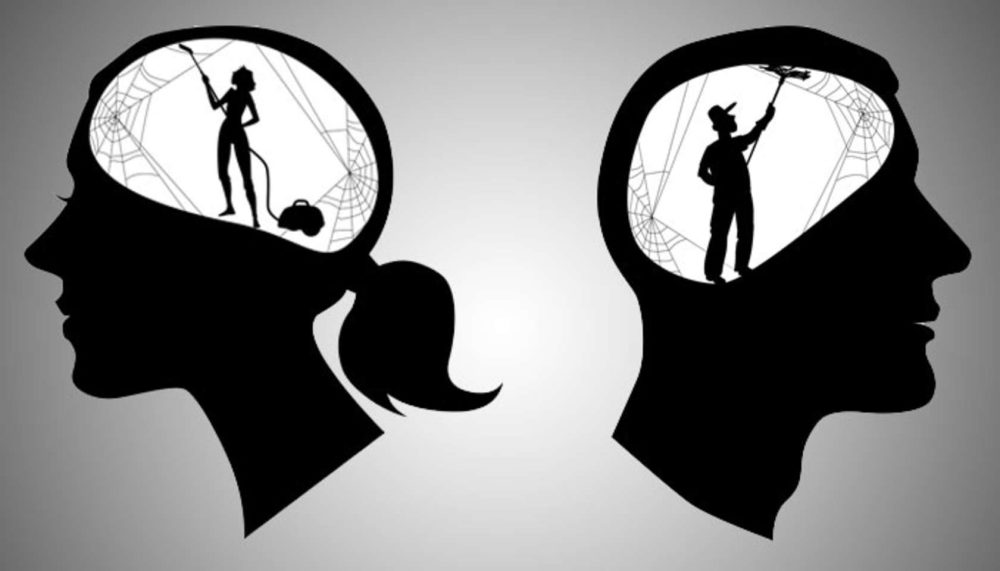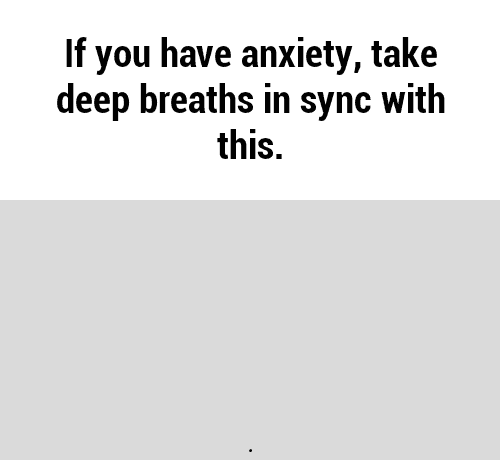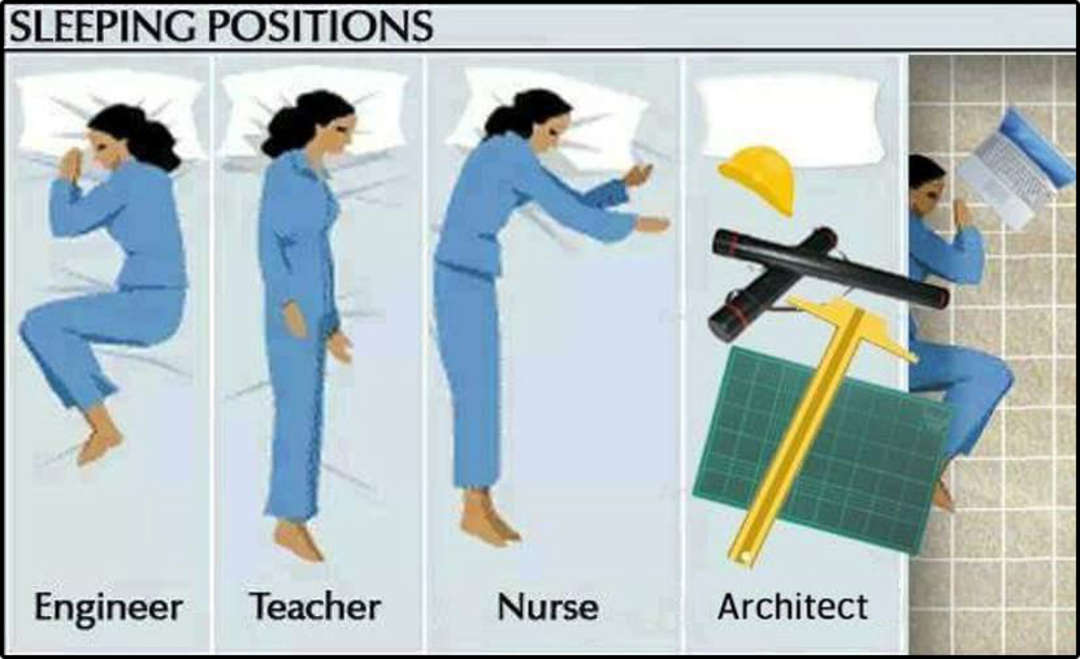
Architecture is a brutal profession.
It’s no secret that architecture school and this profession are extremely demanding. I began going down this path many years ago, and one of the biggest lessons I keep learning over and over again is:
When I take care of myself and get mentally and physically healthy, I tend to do my best work.
Time
Since day one, time has never been on my side.
Ever since I got involved in architecture, a big part of the game has always been how to better utilize the time available to me. The hours are long, and there are never enough of them. In college, I always found myself working very long hours into the night, trying to keep up with the demands of my workload.
My whole way through taking the Architect Registration Exams (AREs), I worked full time. So I often wasn’t able to start studying until after I gave the office eight hours of my day. I frequently woke up at 5 a.m., just so I could get an hour of studying done before I went into the office. After I got my license, I replaced studying with taking on side projects (outside of my day job) and blogging.
This never truly ends. In fact, it gets worse because time starts speeding up as you get older. Sure, many people never work the amount of hours I have. However, I always used to argue that their definition of success is very different than mine. My time is more valuable than my money is. Throughout my entire career, I have always done everything possible to best utilize my own time.
One of my hardest lessons is that it sometimes takes time to arrive at an answer. After you have drawn it 100 times, you need to take a break from trying to find a solution before it can start to materialize.
Image via Young Architect
Getting Stuck and Finding Clarity
Every Architect frequently gets stuck. Maybe you can’t solve a problem you’re struggling with or read one more chapter of the Ballast book. Your brain is completely fried. Getting stuck is absolutely a part of the creative process. Without it, there is no growth. Moving yourself (or a project) out of being stuck and into clarity is something that gets easier the more you do it. It just takes practice and experience.
As I mentioned earlier, when I actively make taking care of myself my first priority, mental clarity (without getting stuck) seems to happen regularly for me. Below is a list of 18 things that I actively do or pay attention to. They trickle down into me being mentally and physically healthier. All of these things play a part in being mentally clear and doing my best work. And they translate into being a better Architect, student or member of society:
1. Start an Internet Diet
Umm, this is my least favorite. So I made this first, but I do it all the time.
Unplug by turning off all your devices.
More than ever, we’re being pinged in a million directions: email, Twitter, Facebook, Instagram, Snapchat, Periscope, text messages, Tinder, Gmail chat and whatever else you have blowing up your phone.
I frequently put my phone on airplane mode. Or I conveniently leave it somewhere far away, just so I can get some work done and stay out of the technology loop.
2. Breathe
Even if you don’t have anxiety, the above graphic is perfect for helping you breathe better.
Most people don’t breathe enough. When I’m stressed out, I take very short fast breaths and this just makes me more anxious.
Rule #1 of breathing: If your belly isn’t moving in and out, you are not breathing.
3. Focus on Eliminating Your Hypercriticism
Architects love to complain, critique and criticize.
It’s how architecture is taught and trained. It’s in our blood. Something could always be better. Architecture school would be the biggest waste of time if they patted us on the backs and told us how great we are. Living in this critical world is good, but it often goes way too far. It’s easy to fall down the rabbit hole of negativity and be that way all the time.
Imagine no longer being allowed to see things negatively — or how something could be better. And start seeing EVERYTHING as if it’s the best thing ever! Most importantly, stop looking for — and focusing on — the negative.
4. Rearrange All the Furniture
I do this even when I’m not stuck or frustrated.
This can border on procrastination, yet it always makes a huge difference. It changes how I interact with my environment and eventually translates into doing better work.
If you live with other people, make sure you ask for permission before rearranging furniture. I once had a roommate freak out on me because they had a really bad day and came home to all the furniture in a different place.
5. Drink a Lot of Water
Most people don’t drink enough water. This amazes me because water is the elixir of life!
The first thing I do when I wake up in the morning is drink a pint glass of water without stopping. This immediately wakes my body up and jumpstarts my brain for the day. When I don’t do this, it takes me much longer to wake up and become energized.
The flip side of this coin is that when you have been actively and appropriately hydrating yourself, your body immediately notices when your routine is disrupted and you stop.
6. Experiment With Your Diet
When I eat heavy food, it makes me want to be lazy and go to sleep. When I eat light and healthy, I have more energy. If I’m trying to get a ton of work done, I avoid eating carbs, pizza, sugars, fast food and anything that can be categorized as junk.
I try to eat tons of fruits, vegetables, salads, chicken and fish. My body digests these foods much easier. When I eat junk, it takes more energy to digest this food, and it leaves me feeling tired and lazy.
7. Take Vitamins
I got religious about taking vitamins when I started studying for the ARE. I played around with all types of vitamins. Some made me feel gross and horrible; others made me feel great. Through trial and error, I finally found out which vitamins worked for me.
At a minimum, I recommend taking one multivitamin every single day. Since I’m an Architect, not a Doctor, you’re on your own about finding which other vitamins work for you, in addition to a multivitamin.
8. Caffeine
Oh yeah, caffeine is in my blood. It’s frequently my fuel. During architectural school, I switched from coffee to tea, and I never went back. You should try it if you’re a coffee-drinker.
For me, coffee was too intense, and I always seemed to crash. And I also hated having gross coffee breath.
9. Avoid Drugs and Alcohol
I’m not an anti–drugs and alcohol person, but when I’m trying to do creative or challenging work, it certainly doesn’t help. Nothing is worse than trying to get the ball rolling with your work when you’re hungover from the day before. If you like to drink or smoke pot, try to put some space between that and doing your important work.
One of the biggest traps I have seen many architecture students fall into is thinking that smoking pot or drinking helps them be more creative. Often, students come up with ideas they think are genius when they are stoned or intoxicated. What usually happens is that when the time comes to present those ideas to a room full of sober people, they have a hard time articulating the genius they had when they were wasted.
I argue that architecture students always do their best work when they are sober, focused and intoxicated on good old-fashioned caffeine.
10. Help a Friend
Architecture trains us to be brilliant problem-solvers. I love hearing about other people’s problems. Sometimes I can help, and other times I can’t. Either way, hearing what other people are struggling with or working on has always been super-beneficial when doing my own work.
11. Exercise
Go for a run. Go for a bike ride. Do some push-ups. Whatever, just get the heart rate moving. Exercise is one of the best things for our brains.
12. Get a Massage
All of us carry years of stress and emotional baggage in their bodies. Maybe it’s your shoulders, hips, or face muscles.
Just like exercise, massage is an excellent way to mix up all the energy inside your body and leave you feeling like a new person.
13. Laugh
When you truly laugh at something hilarious, it’s one of the best things you can do for yourself.
Via Brad Hank (on ARCHStudent)
14. Sleep
Sleep more.
I struggle with this and am the last person who should be telling anyone to sleep more. I barely slept in architecture school, and I never really returned to a normal person’s sleeping schedule.
Sleeping is just as important as eating.
15. Disengage the Studio
When the architecture studio used to feel stale or annoying, I would typically go work at home. Removing yourself from an environment when things start to feel stale can be a powerful thing.
16. Work Somewhere You’ve Had Clarity
Remember that last project you totally rocked and executed from a place of flow and ease? Well, go back and sit in that location. If you did good work there before, try to make that happen again.
17. Journal
Get all the crap out of your head and into your journal so you can free up some bandwidth.
Many years ago, I read the brilliant book The Artist’s Way by Julia Cameron, and she got me into the habit of writing three pages in my journal every morning. The goal is to get all the noise out of your head and onto the page. Fill the pages with whatever comes out and don’t worry about it what it says. Just write.
I still do this regularly, and nothing centers me better. Nothing else helps me get clearer about what I’m working on or planning to do. In fact, I credit all creativity to the fact that I have journaled and freed up space so I can be creative.
Via Houzz
18. Get New Socks
Wearing brand-new, comfortable socks is one of the greatest feelings in the world. It can really change your attitude. Buying super-fancy socks is one of the best investments you could make in yourself.
Take Care of Yourself First
Due to the unrealistic demands of this work, soo many people establish terrible habits. Just because we work long and hard, that isn’t an excuse to not take care of yourself — mentally and physically.





